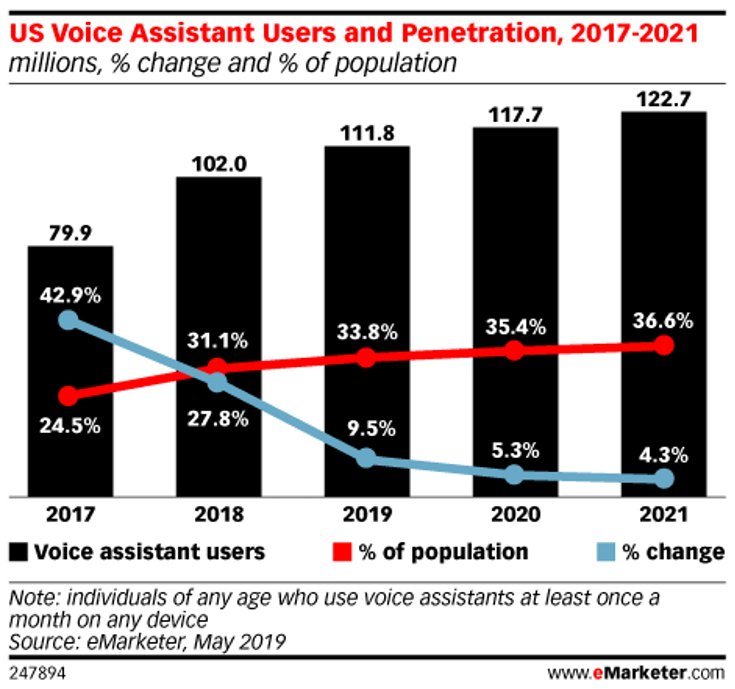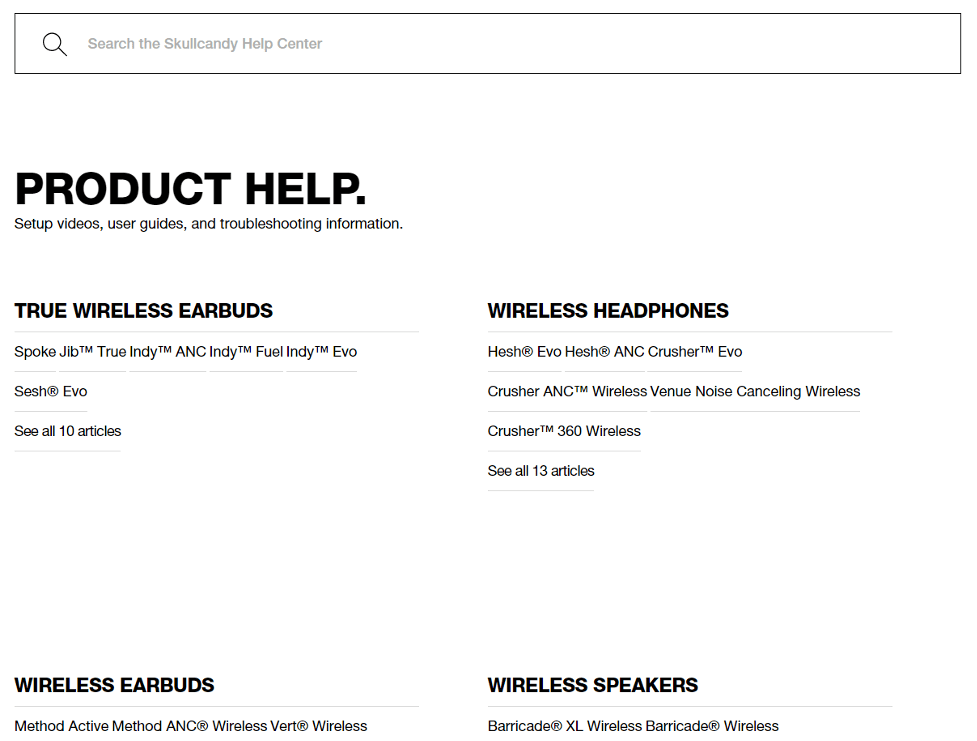2020 turned into a turbulent year for many businesses. While it’s always important to be strategic about your marketing, it’s even more crucial in uncertain times. Regardless of whether your sales plummeted, kept steady, or even blossomed, let’s make sure that 2021 becomes even better.
We’ve chosen eight marketing strategies with great potential ROI to help you hit your 2021 goals, but let’s start with an essential first step before you go all out on marketing:
Ensure Your Branding Is Clear & Attractive
Before we deep-dive into marketing strategies to help you grow your business, let’s briefly discuss branding. Otherwise, you risk promoting a message and experience that doesn’t resonate with your target audience.
Taking the time to brand your business properly will allow you to distinguish your business from your competitors and ensure that the marketing strategies discussed in this article will be effective.
In fact:
- 60% of millennial consumers expect a consistent brand experience across all channels
- 91% of consumers would prefer to buy from a brand they deemed as authentic
- Consistently presenting a brand can increase revenue by up to 33%
To define your brand, you’ll want to consider some of the following questions:
- What are your core values?
- What message do you want to communicate?
- What do you want people to think and feel when they see your brand?
This work isn’t done on a coffee break, but it doesn’t have to take months to chisel out the concept, either. You already have a brand, whether you like it or not. Ask existing customers about how they perceive your company, and see if it resonates with what you want to portray. What changes do you need to make to communicate your brand better?
Your brand can include a lot of things, such as:
- Company name, tagline, and having a memorable domain name
- Logotype
- Colors, typography, and image choices
- Word choices and tone
But it also includes more abstract matters, such as:
- What products or services you choose to offer — and how you offer them.
- What issues you engage with, what you stand for, and what you endorse.
- Your approach to doing business and dealing with customers.
While choosing the right colors and a memorable domain name may seem like small matters, it communicates a lot about you and your business to your prospects — so do it mindfully and strategically. You can even build a strong personal brand using this same idealogy.
With your brand in great shape, let’s dive into the eight marketing strategies that will help your business prosper in 2021.
1. Optimize for Voice Search
Nearly a third of the US population plan to use voice assistance at least once a month, and close to 50% have used voice AI for shopping.

(Source)
So, how can you make it easy for Siri, Cortana, and other voice AI assistance to recommend your business?
Voice-based search queries tend to be longer than text-based, often including conversational long-tail keywords that use question markers such as “what” or “how.”
Make it easier to recommend your business by adding question-based content to your site and then providing a concise answer to the question before potentially elaborating on the topic further.
By considering “the W:s” — who, what, when, why, where, how — you improve your chances of ranking well and being included in Google’s featured snippets.
2. Offer Proactive Customer Support and Service
To offer proactive customer service, you need to gather and organize as much company information (such as employee knowledge, product documentation, etc.) into one centralized location. Doing so makes it easy for your support team to access it immediately and find the right answer when helping customers.
Secondly, by gathering and centralizing company knowledge, you’ll be able to make use of chatbots and knowledge bases for self-service. Providing self-service as a support channel is important as 70% of customers expect a company to offer a self-service option for immediate support.
As part of proactive support, chatbots are becoming increasingly popular. In fact, 67% of consumers interacted with a chatbot for customer support during the last year. But chatbots are not just a support tool for existing customers — they can also help you convert prospects.
For example, you can create a conversational landing page where a chatbot guides a user to a specific product or uses chatbots via messaging systems on social networks to share opening hours or guide users to popular website pages.
Another useful tool to help with proactive support is a customer knowledge base that can store product documentation, instructional videos, tech specs, and more. Like a chatbot, a knowledge base can also help with conversions by bringing leads via SEO as the tutorials, how-to-guides, and FAQs are naturally filled with potential buyer intent keywords.

(Source)
3. Refocus Your Social Media Presence
A study showed that 46% of women and 41% of men reported spending more time on social media due to COVID-19. So is that a reason for businesses to use social media more, as well?
Maybe. But, for you to get a high ROI from social media, you’ll need to consider what makes sense for your business. How are your current social media efforts converting? The main factors to look out for are engagement and sales:
- Is the platform still a good fit for your business and your customers?
- Does your message get reactions, or is engagement low?
- How does social media convert to sales? Can you track sales?
By refocusing social media on activities that lead to high engagement and an excellent conversion to sales, you’re better equipped to cut away that which is a waste of time and money.
4. Review Your Email Marketing
Is email marketing just the “same old, same old”? According to the 2020 Hubspot marketing study, 80% of marketers reported increased email engagement during the past 12 months. As social media networks come and go, email marketing remains one of the best ways to have that crucial control over prospects’ and customers’ access.
For 2021, you’ll want to review your opt-in offers, how you segment your lists and what messages you send out. If you’re marketing to a European audience, it’s also a good idea to review your GDPR compliance.
5. Include Interactive Content
HubSpot’s 2020 marketing report shows that 70% of marketers are actively investing in content marketing. And the best type of content? Content that includes the customer. We previously discussed the need for engagement in social media. Ideally, you don’t just want to create content that speaks to your target group — you want content that makes your target group speak to you!
Quizzes, polls, and other questions that encourage answers lead to higher engagement. When it comes to quizzes, research by Leadquizzes shows that the average quiz is shared up to 2,000 times and enjoys a lead capture rate of 31.6%.
6. Give Your SEO a Boost
SEO has come a long way since it was all about stuffing your home page with keywords. While being mindful of keywords on your web pages definitely is important, new types of SEO such as visual and local SEO are getting more and more attention:
-
Monitor Core Updates
Google rolls out what they call broad core updates a few times per year. While the impact of an update can be difficult to predict, you can minimize the risk of dropping in the rankings by focusing on high-quality content and “E-A-T”: expertise, authority, and trustworthiness. Google’s general guidelines give a deeper understanding of what the search engine values when ranking pages.
-
Work on Visual SEO
Data from Think with Google showed that the number of image searches increased by 60% from 2016 and 2018. Benefit from the boom by optimizing your images and videos for better rankings in the search results.
For a good start, ensure that your image and video quality is of the highest possible quality. Then you’ll want to add a keyword-rich description to any videos you upload to services such as Youtube. For images, include keywords in the alt text and file name.
-
Pay Attention to Local SEO
Do you have a local presence? Pay attention to the use of local keywords both for your My Business-profile and on your website. A Google/Ipsos 2019 study shows that 60% of respondents had contacted a business straight through the search results, such as the “click to call”-option.
A good first step for improving local SEO is to keep your My Business-account from Google filled out and updated:
- Get your business verified by Google.
- Fill out the profile with a presentation, address, opening hours, and other crucial information.
- Add images for further credibility.
- Ask customers to review your business on Google.
7. Power-up With Segments
Segmentation is hardly a new thing, but it is becoming increasingly important. The Hubspot study shows that marketers tend to market to three audience segments, and segmentation made websites 2-5 times more effective in converting traffic.
By identifying who you serve, your business becomes more customer-centric. When you target a well-defined audience with an offer of what they really want, you increase conversion for content and get a higher ROI for social media ads.
Remember the interactive content with quizzes we recommended above? They are a useful way to segment prospects and use personalization to connect with them. For example, you can choose to market a certain product only to customers who have expressed interest in that type of product before.

8. Maximize Social Commerce and Shoppable Posts
Through social media, direct shopping was worth an estimated 22 billion dollars for the U.S. market in 2019. For 2024, the projection is for a whopping 84.2 billion dollars.
For any product-based business, this is an opportunity to sell directly to followers. For example, Facebook allows you to create a Facebook store, where your followers can buy straight away without leaving the platform. On Instagram, shoppable posts allow for a similar experience, where you add products to your catalog and then tag them in the posted image. Pinterest has a similar feature with its buyable pins.
Regardless of which platform you choose, remember to use the best possible photo to honestly and attractively show off your product.
Wrapping up
Which of the strategies above makes the most sense for you? It depends on the nature of your business. For example, a company with a local presence will benefit more from local SEO, while a product-based company will do well to spend time on image search.
However, most of them can benefit any business. Offering proactive customer support, focusing on interactive content, and keeping in touch with prospects and customers via email are examples of strategies that will bring ROI to most businesses.
Regardless of which strategies you focus on for your business in 2021, make sure you spend some time getting your branding right first. A good place to start? Get a memorable domain name with ShortDot.
Author: Josh Brown
Josh is a Digital Marketing Consultant. You can connect with him on LinkedIn.
